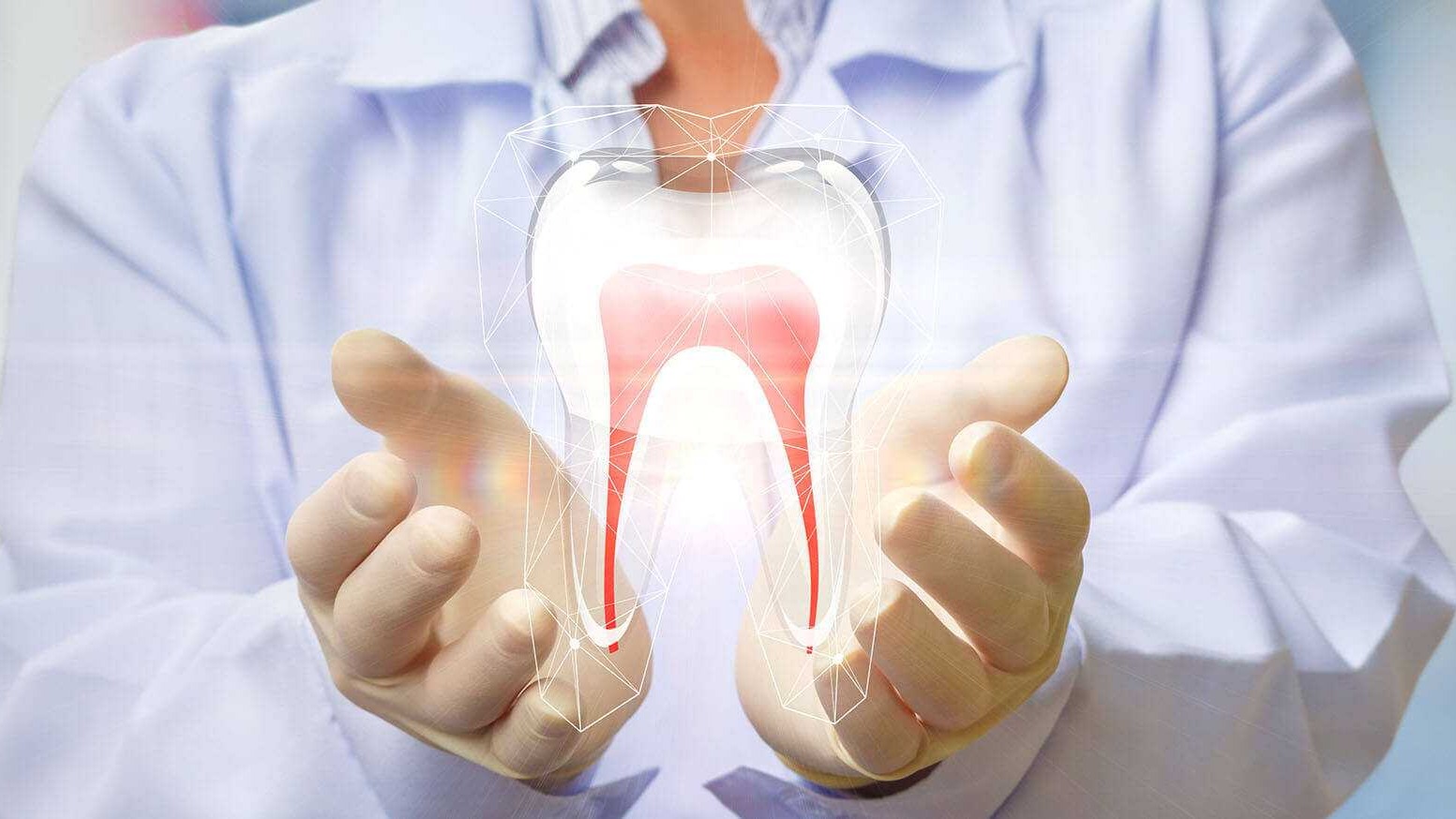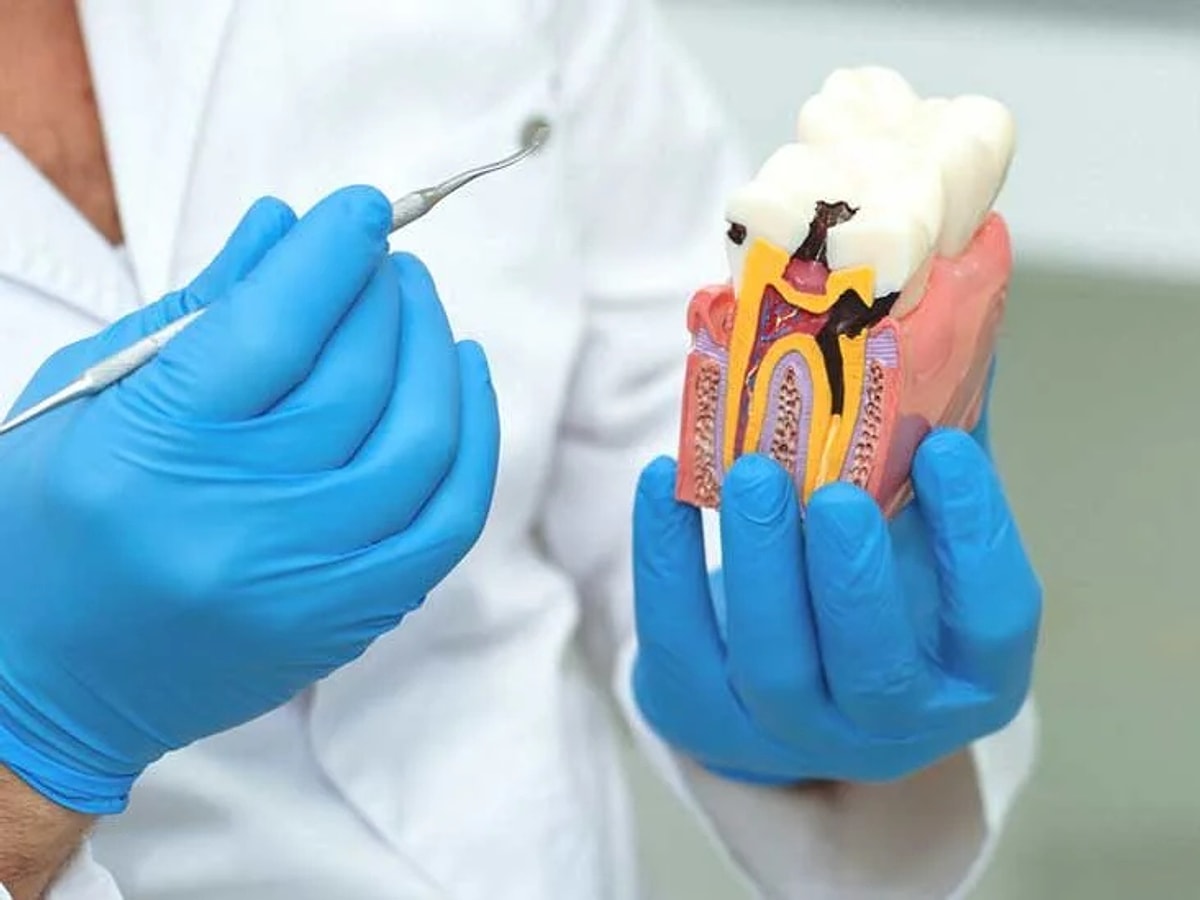A root canal is a type of dental procedure used to treat tooth core inflammation. It is a common misconception that root canals are extremely painful, but modern techniques and anesthesia have made the process relatively comfortable. The procedure involves removing the infected pulp, cleaning the inside of the tooth, and sealing it to prevent further infections. It is often recommended that if the decay has penetrated deep into the tooth, a root canal can save the tooth that would otherwise have to be removed.
This treatment not only relieves pain but also helps maintain your natural smile and chewing ability. Book an appointment for the treatment of your tooth today!
WHAT IS A ROOT CANAL?
A root canal (endodontic treatment) is a dental treatment that aims to treat infections in the pulp, the inner layer of the teeth. Endodontists and dentists perform approximately 15 million root canals in the United States each year. You can often avoid the need for a root canal by taking care of your teeth.
- Severe pain when chewing or biting
- Sensitivity to hot and cold temperatures
- Gum swelling and tenderness
- Tooth discoloration and darkening
- Cracked or broken tooth, persistent bad breath or a bad taste in the mouth, tooth mobility or loose teeth.
- Signs of infection after root canal treatment, such as persistent pain, recurrent gingival papules, inflammation, high fever, and chronic bad breath.
Root canals are a common and effective dental method used to cure and preserve teeth that have been significantly compromised by gum disease, tooth decay, or trauma. These include removing the infected pulp, cleaning and sealing the tooth to prevent reinfection. The pulp has connective tissue, blood vessels, and nerves that can get infected when they come into contact with germs.
Delaying treatment can cause the bacteria to spread, causing tooth loss, bone loss or a tooth abscess that requires more extensive and expensive treatment. Many people are wary of root canals, but the process is almost harmless because you are under local anesthesia. Your dentist will check your symptoms, the amount of damage, and the level of infection to determine whether you require a root canal.
However, it is important to be aware of symptoms that may require root canal treatment so that you can seek treatment as soon as possible. Read on to learn the most common signs you may need a root canal and how to spot an infection later.
COMMON CAUSES FOR NEEDING A ROOT CANAL
- Deep Decay: Untreated cavities extend into the pulp
- Repeated dental procedures: Multiple treatments of the same tooth
- Cracked or chipped teeth: Exposes the pulp to bacteria
- Trauma: Tooth injury
- Gum disease: Severe periodontal disease that exposes the roots
- Use of teeth: Grinding
- Large Fillings: Old or large fillings will break
- Spread of infection: Infection of nearby teeth
WHAT HAPPENS DURING ROOT CANALS?
Before starting treatment, your dentist or endodontist will take an x-ray of the affected tooth. They can do other tests to determine if your tooth is dead, inflamed, or infected and confirm that you need a root canal. they can:
- Gently tap the tooth or use a cold or hot substance to control sensitivity or discomfort.
- Do an electric pulp test (EPT) using a device that sends a gradually increasing electric current through the tooth to see if your pulp responds.
- Check the gums and the bone around the tooth for signs of swelling.
- Ask if it hurts when you bite with your teeth.
- If you require it for teeth grinding, snoring, or sleep apnea, the mouthguard should be worn at night or during sleep.
- Consult your dentist if you have doubts about how often you should use the mouthguard.
If you need a root canal, your dentist will examine you to assess the severity of infection, damage, and damage. They then clean and disinfect the inside of the tooth and place a filling to close the tooth.
The root processing steps are as follows.
- Your dentist will inject an anesthetic to numb your infected tooth and nearby gums. If you have dental anxiety, your provider may give you medication to help you relax. The medicine can cause drowsiness, which means that you cannot drive immediately after treatment.
- Next, your dentist places a thin, flexible piece of rubber over the infected tooth and nearby gums. It is a dental dam that keeps the tooth dry during treatment.
- They drill a small hole in the crown of the tooth to access the pulp of the tooth.
- Then they use small dental instruments to remove nerves, blood vessels, and tissue from your pulp.
- After the pulp is cleaned, the dentist will clean and disinfect your pulp chamber and root canal.
- Next, they fill the empty pulp chamber and root canals with a flexible, rubbery dental material called gutta-percha.
- Your dentist will then seal the tooth with a temporary filling. The sealant prevents bacteria from entering the tooth.
In the final step, the service provider places a dental crown on the treated tooth. Dental crowns protect your teeth and restore your bite – how your teeth come together when you bite. Dental crowns are usually made to order, so this final step can take two to three weeks.
WHAT HAPPENS AFTER A ROOT CANAL?
Your provider may recommend that you rest for a few minutes before leaving the dental clinic or the provider’s office. It may take an hour or more for the anesthesia to wear off, meaning your mouth and gums will no longer be numb. Some people choose to rest at home during this time, while others continue their normal daily routine. Typically, the health provider will have two more hours to prepare your tooth for the crown and then place the crown on the tooth.
CONCLUSION:
In conclusion, root canal therapy is an important dental procedure to treat and save severely inflamed or damaged teeth.
Many people find it very painful, but modern methods and anesthesia make it much more comfortable. The process involves removing the infected pulp, cleaning and disinfecting the tooth, and sealing it to prevent further infection.
Early treatment of symptoms such as severe pain, sensitivity, swelling, and tooth discoloration can help prevent more serious treatments and preserve your natural smile and ability to chew. Taking care of your teeth and seeking prompt treatment is the key to maintaining good dental health. Visit your dental office!












